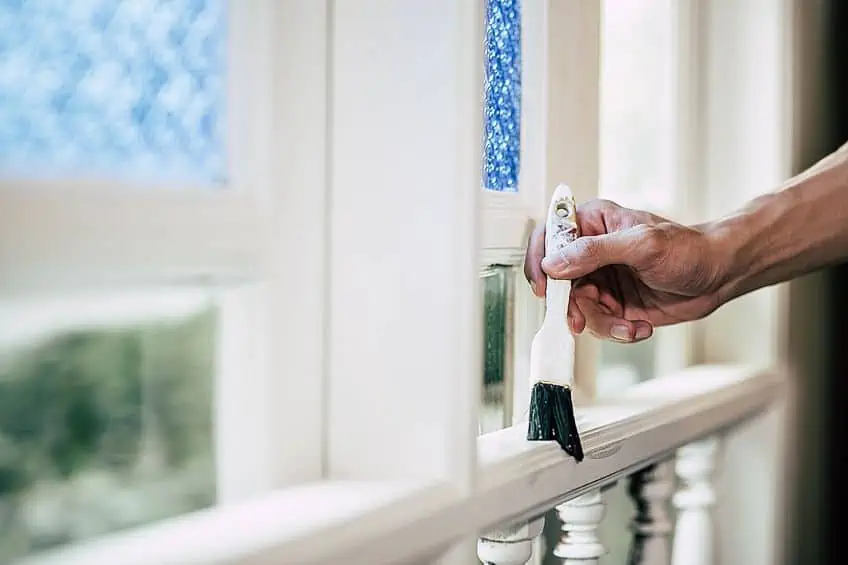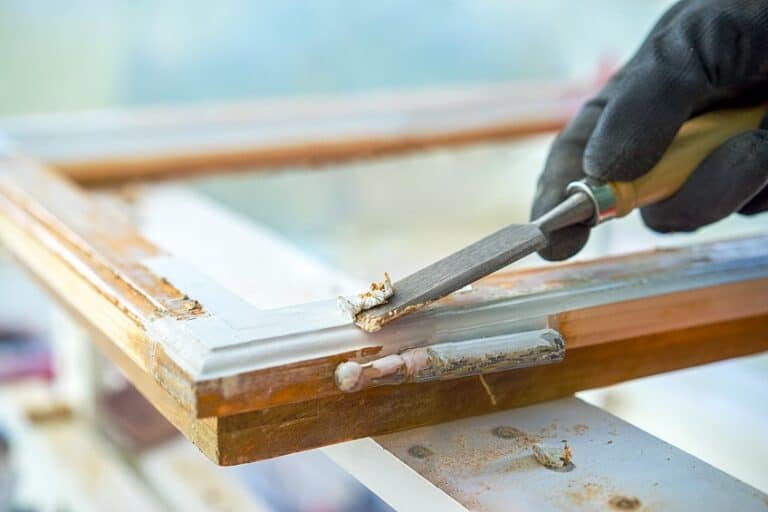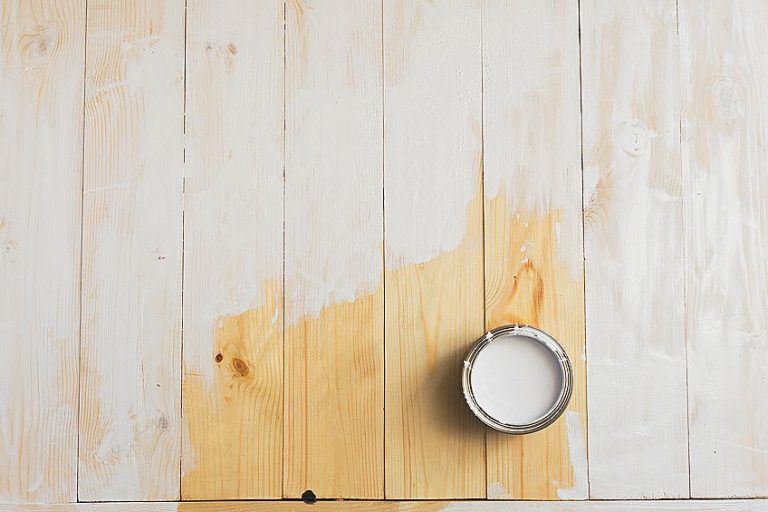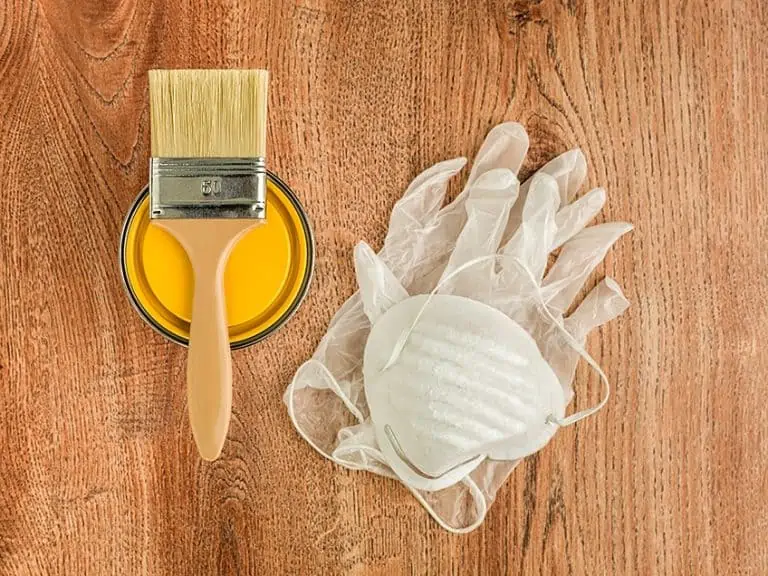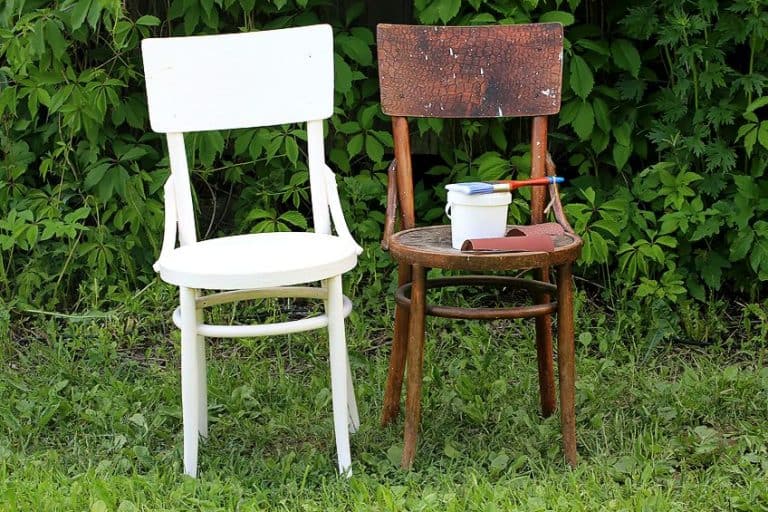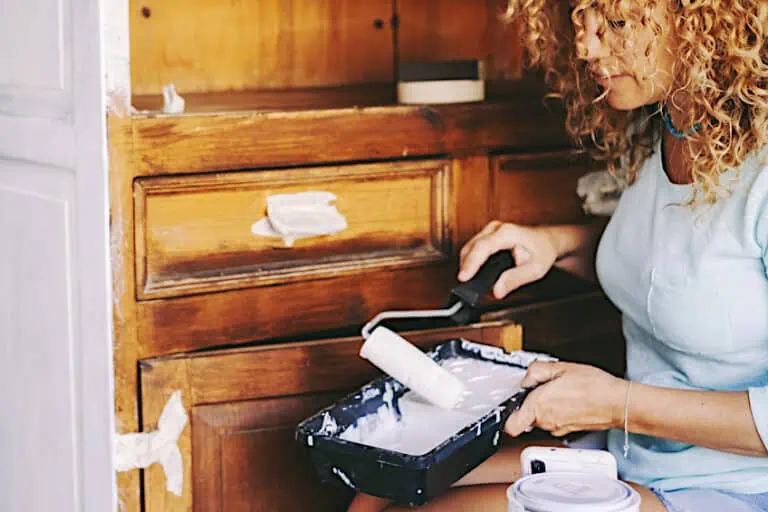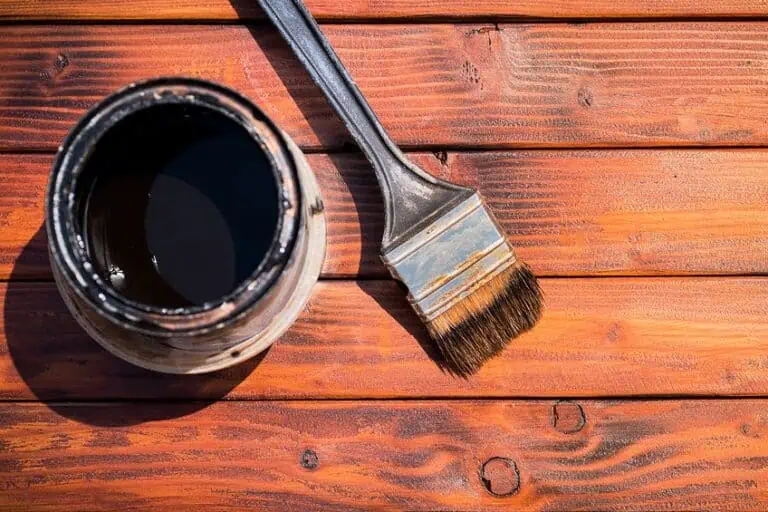How to Paint MDF – The Best Method for Priming and Painting MDF
Medium Density Fiberboard, or MDF, is a popular wooden product consisting of small wood fibers mixed with wax and resin. The mixture is compressed under high pressure and heat to form the final product, which results in a solid wood-like product that looks similar to natural wood. MDF is not the same as hardwood, however. So, now that you know more about what MDF is, dive into a journey with us on its qualities, uses, and how to paint MDF.
Table of Contents
What Is MDF Used For?
MDF is widely used in different environments. It is often used for household furniture, as well as industrial industries. This product owes its popularity to the fact that it is significantly cheaper than solid wooden boards. Its size is sheets of 4 by 8 feet that can be anything from 1/4 to 1-inch thick. The boards do not have knots or wood grain like other wood products, making them convenient to cut. Therefore it is also often used for trimming and carpentry work. MDF has a smooth and hard surface, so painting and veneering its surface is quite easy. You might even find that many of the shelves in your bedroom or bathroom cupboards are, in fact, MDF!
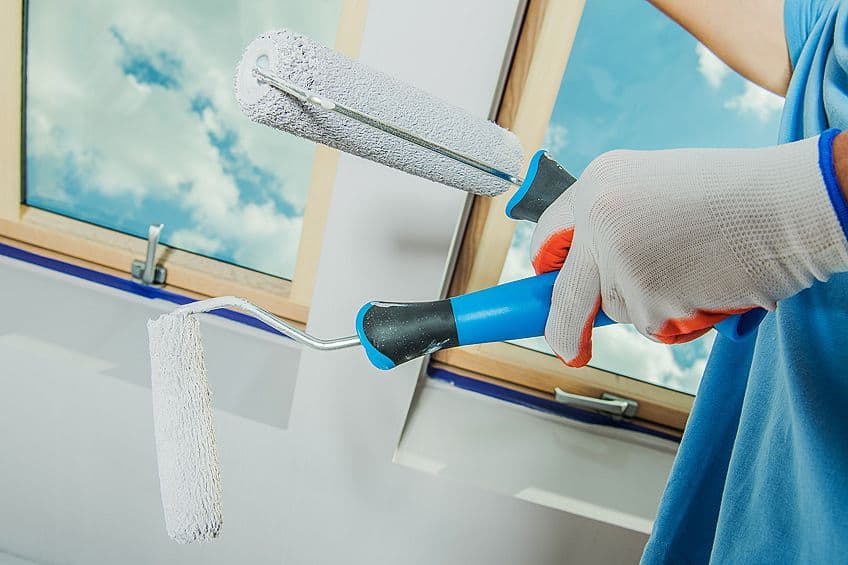
Even though MDF is quite strong and hardy, it can still be shaped into angles, curves, and panels, making it a go-to for household furniture like kitchen cupboards, for example. MDF’s major drawback, however, is that it absorbs moisture extremely easily, and this leads to swelling, cracking, or splintering. If this happens, its shape and form will be changed permanently. You do not have to feel intimidated, though. We are here to guide you on how to paint your MDF like a professional. Bearing in mind this product is not a friend of damp air, water, or any water-based products, you will be able to seal, paint and prime your MDF to make it look professional, neat, and modern.
So, if you are wondering how to make the best use of your MDF and avoid any pitfalls, especially in rooms that are prone to have moisture in the air like bathrooms, read on.
How to Seal, Prime, and Paint MDF Successfully
If you are still wondering, the answer is “yes”. You can paint MDF! In fact, it is a great idea, because it protects the wood from absorbing any moisture. It is actually better to paint your MDF than to use it in its original form. You can paint your board without having to do too much expensive preparation work too. But before you start, here are some very important tips and tricks you need to know.
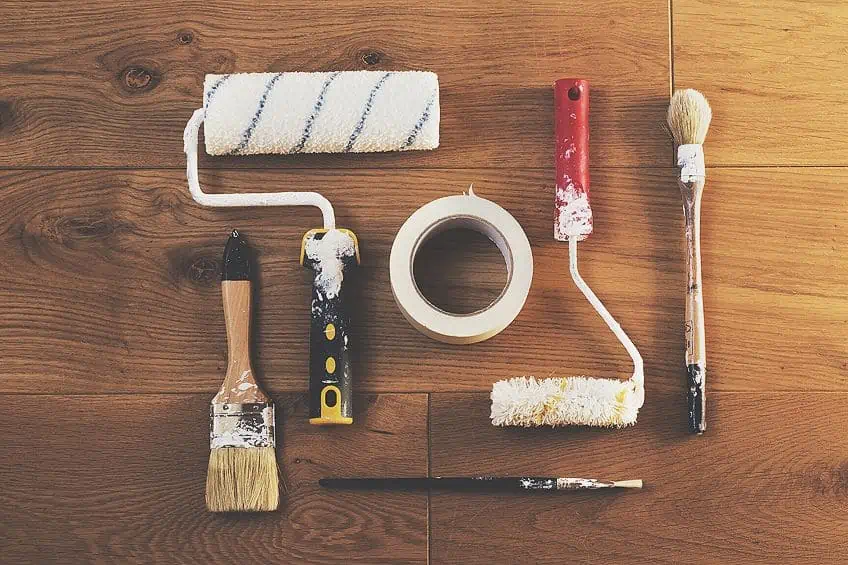
Remember to wear good safety equipment when sanding, painting, or cutting the boards to prevent any injuries or health problems. Double-check that you have all the necessary equipment before you start. If you are prone to allergies or breathing problems, consult your medical professional before working with your MDF or any paint products.
Here is everything you will need. Most of these can be acquired at a general hardware store.
- Coveralls or old clothes
- Gloves
- Mask or facial covering (for dust)
- Safety glasses
- Sandpaper
- Sanding pads
- Old cloths
- Your chosen sealer
- MDF-friendly paint
- MDF-friendly primer
- Paintbrushes
Before starting, make sure you protect your workspace with old fabric cloths or layers of newspaper. MDF produces high volumes of dust when sanded, so the mask and safety goggles are strongly recommended, especially if you are allergy-prone or have breathing difficulties. You will need a fairly large space to work in, so we recommend that you do your woodwork, sanding, and painting away from your indoor spaces.
It is always a good idea to have a clear picture in your head of what you want your end-product to look like. It might be helpful to go online for some inspiration. Browse idea board platforms like Pinterest if this is your first MDF project.
So, now that you have all the required items, here’s how to go ahead with the sealing, priming, and painting process.
Seal the Edges of Your MDF
The MDF’s edges are actually more porous than the surface is, so they can absorb moisture easier. So, sealing the edges is critical as it will prevent the board from swelling or deforming if it does get exposed to moisture. It will give your paint an optimal adhering surface, resulting in a smooth look. Remember, the edges are still visible and will also be painted, so they need to be sealed and primed too. Here are your different options to seal the edges.
Acrylic Paint Sealer
You can also use acrylic paint which is also suitable for all kind of wood as a sealer. Apply a very thin layer, to prevent it from running. Choose a color that matches the topcoat if possible. It would be best to use heavy-bodied paint so that one layer will be enough to seal the MDF. It might not look pleasing to the eye if you pile on the bottom coats too thick.
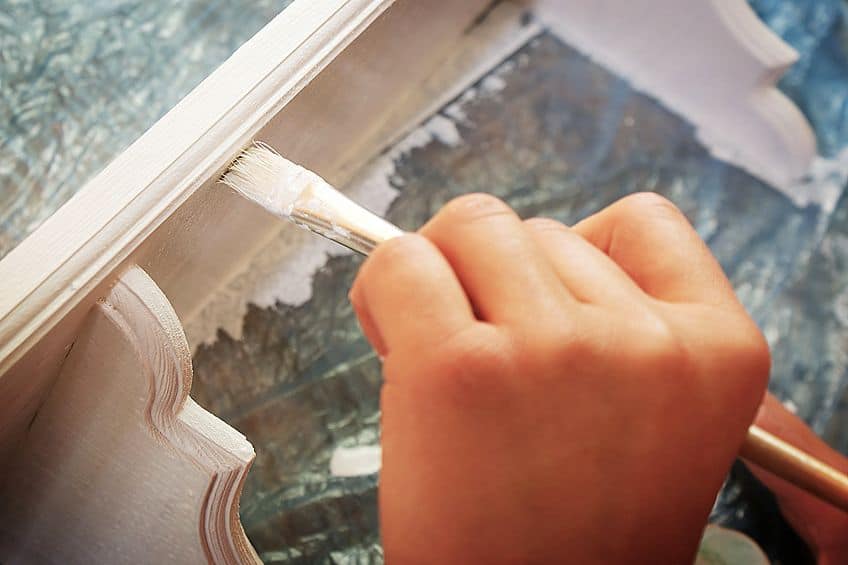
Drywall Sealer
For this technique, compound to the edges (using your hands is fine). After it has dried, sand down the edges with sandpaper. (Here, your trusty mask, goggles, and gloves come in again!). You can also conceal any unwanted marks or flaws on the flat surface of your board with any leftover compound. Next, sand down the entire surface, then wipe it down with a dry cloth to make sure there are no dust particles.
PVA Wood Glue
You can seal your edges with wood glue too if you already have some at home or you prefer not to use a paint-like acrylic. You can use an airbrush or spray bottle for an even effect. Remember not to use PVA glues that need to be mixed with water. An acid-neutral PVA glue (usually used for bookbinding) is a good option. When it has dried, sand down the edges until smooth.
Prime your MDF
After sealing the edges, you can’t start painting just yet. A primer is necessary as a base or foundation layer to make extra sure that no moisture reaches the MDF (yes, it really is that sensitive to moisture). A primer can act as a “background” or “canvas” for your final paint. Your primer needs to be exactly the right type, to avoid the paint forming a “skin” layer that will peel off. This part is essential to have a neat, finished-off end product.
Because MDF is so sensitive to different chemicals, you need to be even more particular about your primer, and we are here to help you choose the correct one.
You should never use a latex primer for your MDF because it will cause the wood to expand, and stay away from multi-purpose primers too. You should only use a solvent-based primer. This is because various adhesives and chemicals are used during the production of MDFs that could cause a reaction with the primer and damage your board.
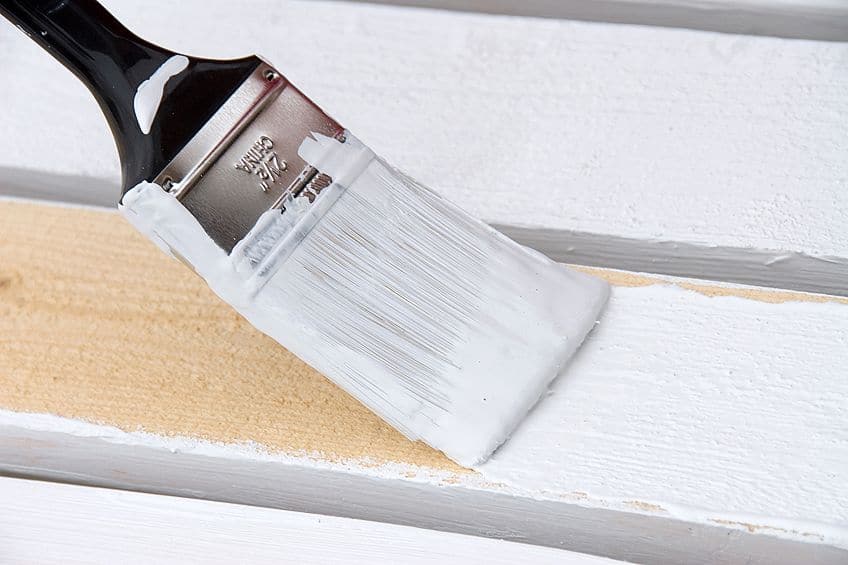
Remember to use primer on your newly-sealed edges too! You can apply two or even three layers of primer to the board, and sand down the surfaces very gently between coats. Ensure your product is dry before you continue with the next coat. It pays off to display a little patience during this step of this process! Also, take care to wipe down all the dust particles after sanding.
Because MDF is so porous, we recommend that you prime both sides of the board, to avoid having your paint bleed through to the other side. This will act as a double layer of sealant.
Our Top Choice: ZINSSER Interior/Exterior Oil Primer
This Zinsser Interior/Exterior Primer can easily cover stains caused by water, for example. This product can adhere to nearly any exterior or interior surface without sanding needed beforehand. It also covers uneven colors and seals and penetrates all surfaces, so it really is a go-to for us.
This Zinsser primer can, however also be used with ease in personal projects. It penetrates exterior surfaces fully and results in a smooth end result. It is available in a tin as well as a spray can, so it depends on how much you need as well as your personal preference of how to apply it.
- Dries very fast
- Covers stains easily
- Covers redwood and cedar bleeding
- Adheres to most surfaces very easily
- Not always easy to apply due to consistency
Painting Your MDF
For painting your MDF, you really have numerous options. Now, the real fun begins! Look around at your different options and what is best suited to your item and needs, before you start.
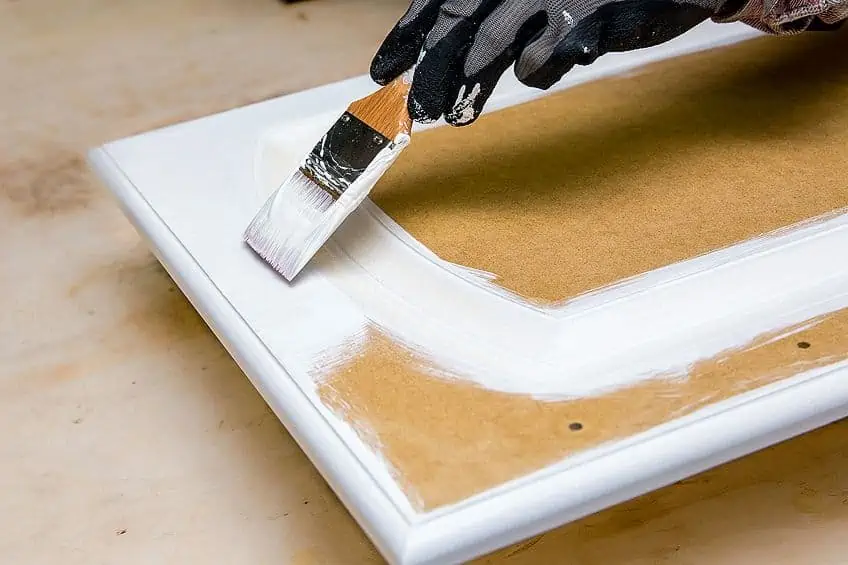
Oil-based paint is usually best for painting MDF because it is most compatible with a solvent-based primer. However, you will also have to thin the paint with a paint thinner. (Remember, no water!).
When using oil-based paint, remember to use protective gear like goggles and a mask as they often emit strong fumes which could be dangerous to your health. We recommend that you apply this paint in an open-air environment. Another option is to use acrylic paint, which dries very fast.
Remember to use a non-water-based acrylic, as you do not want your MDF to get any moisture.
You can also use latex paint. However, these are water-based, and should only be used after careful consideration. Your board and edges will need to be sealed very thoroughly. One small area that is not sealed properly is enough to cause splintering or swelling. Latex paint is still popular though because of its fast drying time and low fume emissions.
The Base Coat
After settling on your type of paint, you will start by applying the base coat. This should be a very thin layer, and it should dry easily. Then, sand it down again gently, and continue doing this after each coat (and after making sure it has dried properly). If you rush between coats, some layers might never dry properly and will result in smudges or dents.
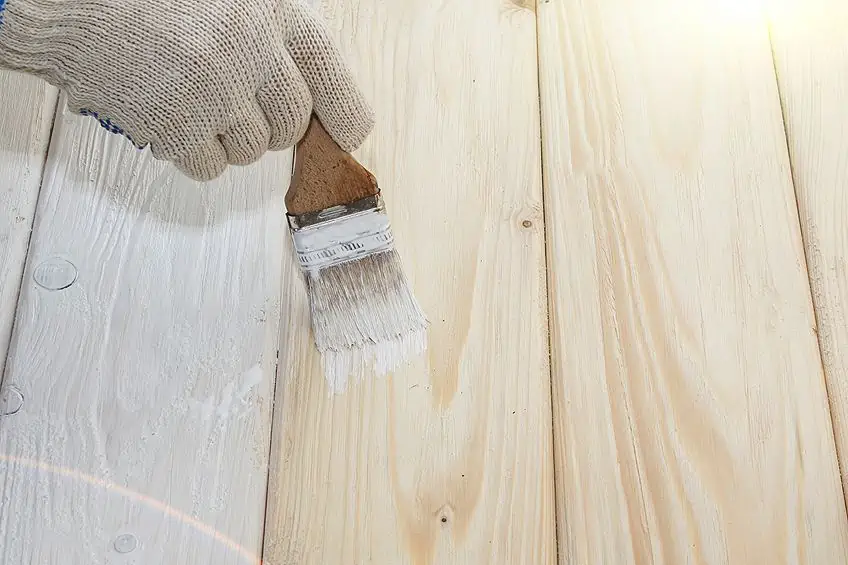
For the base coat, use a roller, brush, or a spray gun, whichever works the easiest and most convenient for you. Apply two or three coats of paint for a neat, finished-off look. Depending on your item, you might need a final sealing coat or topcoat. Household furniture like cabinets or shelves that are used frequently usually does need sealing or topcoats. Again, it depends on your vision for the end result.
Our Top Choice: INSL-X Semi-Gloss Cabinet Paint
INSL-X is an enamel paint ideal for products that will be used indoors. This paint gives an ultra-smooth and shiny finish. It adheres specifically well to MDF, meaning you might not even need a primer in some cases. However, unless you are fairly experienced, we recommend that you still apply the primer first.
It also has very good leveling and flow properties and is easily cleanable from stains. This product is high-quality and resistant to chipping, making it one of the more durable paints on the market. The ideal condition to apply the paint in is when the room temperature is between 50 and 90 degrees Fahrenheit. This paint is, however, not in the low-budget range and is relatively expensive.
- Can be used without primer
- Provides a very smooth finish
- Low volatile organic compound (VOC) levels
- Easy to clean
- Needs more coats than its competitors
- Relatively high-cost
Applying Your Sealer
A sealer or topcoat protects your board from water rings, scratches, discoloration, and is especially helpful for furniture that is handled a lot. It also makes the board very easy to clean, as you can just wipe any dirt or stains with a wet cloth. This could come in very handy with furniture such as kitchen tables finishes or coffee tables.
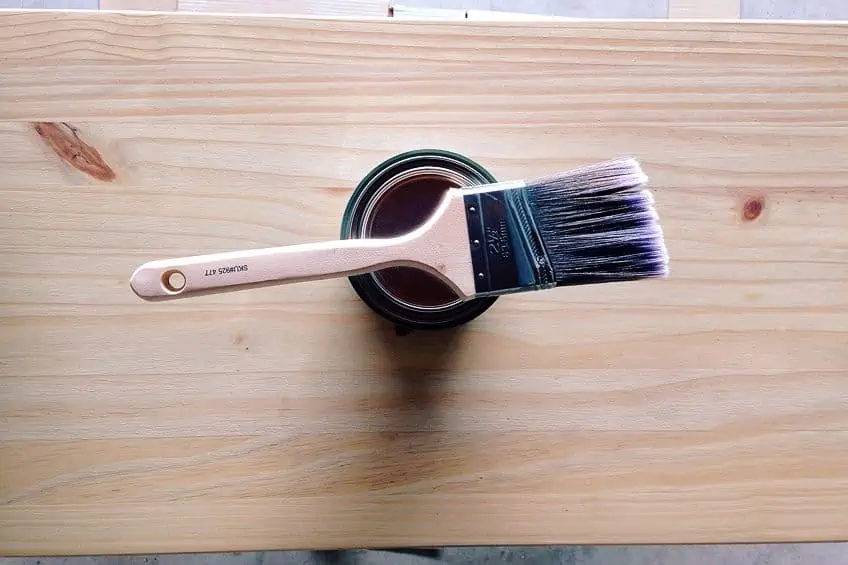
If your board is painted a dark color that can show dust stains and smudges easily, a sealer is a must. If your MDF is used in an area where it may be exposed to moisture, like a bathroom, the sealer is very important as it will add another layer of protection. Some say that latex paint does not require a topcoat, but we disagree. They can form bubbles if they get exposed to moisture, so the topcoat will prevent this.
Remember to also seal your edges as well as the surface when applying the topcoat. In other words, yes to a sealer!
Our Top Choice: MINWAX Polycrylic Protective Water-Based Finish
The Minwax Finish has a very clear and shiny look. This can be applied with a brush, roller, or spray can. It is not toxic and only needs water to be cleaned. However, it does not behave well in extremely high temperatures, so it might not be ideal for an item placed near a stove, for example. If your item will be placed in a room or environment that is only exposed to neutral room temperatures that do not fluctuate too often, like a table or bookshelf in a living room, this sealer is perfect.
This sealer is available in a range of options including semi-gloss, gloss, satin, and matte. It takes only one to two hours to dry, and within three hours, you can handle it. After about 24 hours, you can use the product. However, as painting circumstances vary, touch the item with caution and very gently at first to ensure it is completely dry. Rather err on the side of caution.
- Crystal clear finish
- Dries quickly
- Low odor
- Easy to clean
- Non-toxic
- Not suited for high temperatures
- Does not produce the matte effect
Things to Keep in Mind
Did you know that MDF is a fire retardant? Most MDF boards are made with a formaldehyde-free (NAF) adhesive system, which slows down the spreading of flames in the event of a fire. So, if you opt for Fire Retardant (FR) MDF, the contents of your furniture, as well as the item itself, will be less exposed to potential damage in the event of a fire.
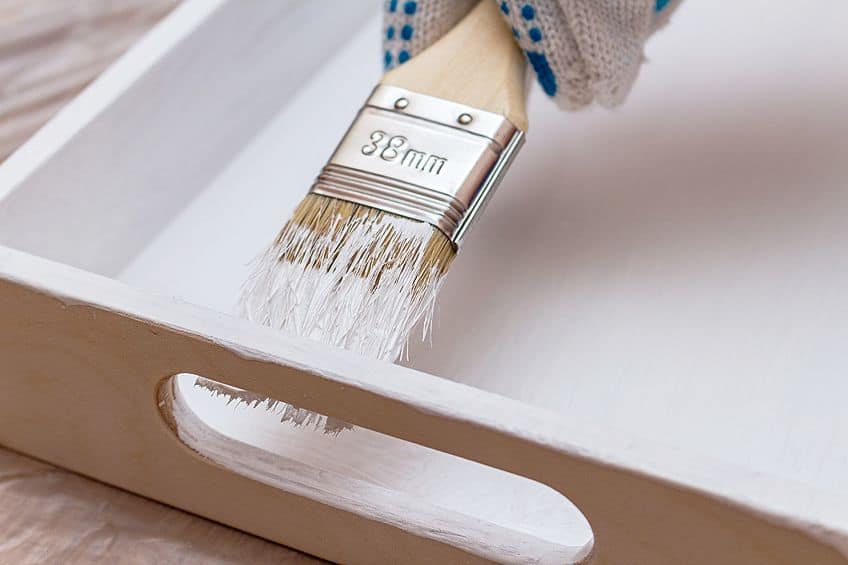
This makes FR MDF a good option, especially for indoor use, or for industrial use such as paneling or insulations. It might be a safer option, whereas natural wood is known to catch and spread fire quickly. Note: Even FR MDF is by no means fireproof and should never be used as such.
Many people may shiver at the thought of painting MDF because it is somewhat of a mystery material. With our easy tutorial, you do not need to fear MDF anymore! All you need to do is follow our instructions and you will have a beautiful painted finish on your MDF fittings.
Frequently Asked Questions
What Is MDF?
MDF (medium-density fiberboard) is a wood product that contains wood fibers that have been mixed with wax and pressed together under heat and pressure. It is often used for household furniture but is also popular in industrial use.
What are the Benefits of Using MDF?
MDF has a smooth appearance with no wood grains or knots, making it very easy to paint. Furniture makers do not have to consider matching the wood grain, resulting in a well-finished look, yet it still has a similar appearance to natural wood. MDF is also relatively cheap and easily acquired in most countries. Most MDF is also fire retardant, meaning your furniture item and its contents are offered some protection in the event of a fire.
What are the Disadvantages of using MDF?
MDF is very handy for using as is in solid sheets, but it is not very compatible with nails, bolts or screws. This is because it is made up of fibers, so it might splinter when screws or nails are driven into it. It will therefore not withstand any drilling. This, unfortunately, brings down the durability of the product significantly. Another disadvantage, as discussed throughout this article, is of course its tendency to soak up moisture. This strongly affects the areas you can use it in and might limit its use.
Why do I Need to Use a Specific Primer?
MDF is porous, and any exposure to moisture will cause it to swell or distort its form. So, it is essential that you use a solvent or oil-based primer. Some primers also contain chemicals that might react with the resin or other substances that were used in manufacturing MDF, which could result in damage to your board.
What Paint Type Is Most Recommended?
We strongly recommend oil-based paint. However, you can also use other types like acrylic and latex, in fact, we name quite a few different options above. Remember to always ensure that your MDF is properly sealed. This product lends itself well for the use of a spray can, which will result in a smoother look than paintbrushes.
Can MDF Boards Be Stained to Look Like Wood?
MDF does not have natural grain. So yes, it can be stained but it might not look exactly like wood, and there is no guarantee. Wood stain will not be absorbed into the MDF as it would be with natural wood. We tend to say, embrace it for what it is and use its own unique look as its feature, instead of trying to resemble wood.
How Strong Is MDF?
MDF is relatively strong enough for small daily-use items, such as coffee mugs, cosmetics, or even books. However, it is not a heavy-duty product, so it can not be used to support large loads like metal pots and pans, building tools, or industrial appliances. If you require shelves or furniture that offer more support, opt for a more durable product, such as plywood.
Is MDF Difficult to Paint?
MDF is relatively easy to paint, if you apply a sanding sealer before painting. Because MDF is basically made from compressed wood fibers, the surface is dense and paint won’t sink in too much.

I have been into woodworking since 2005 and woodturning since 2011. Because of my love for wood and woodworking, I started woodhappen.com to teach other enthusiasts about how to finish and seal wood, the best woodworking tools, the different types of wood, and everything else related to woodworking! Read more about me here.

